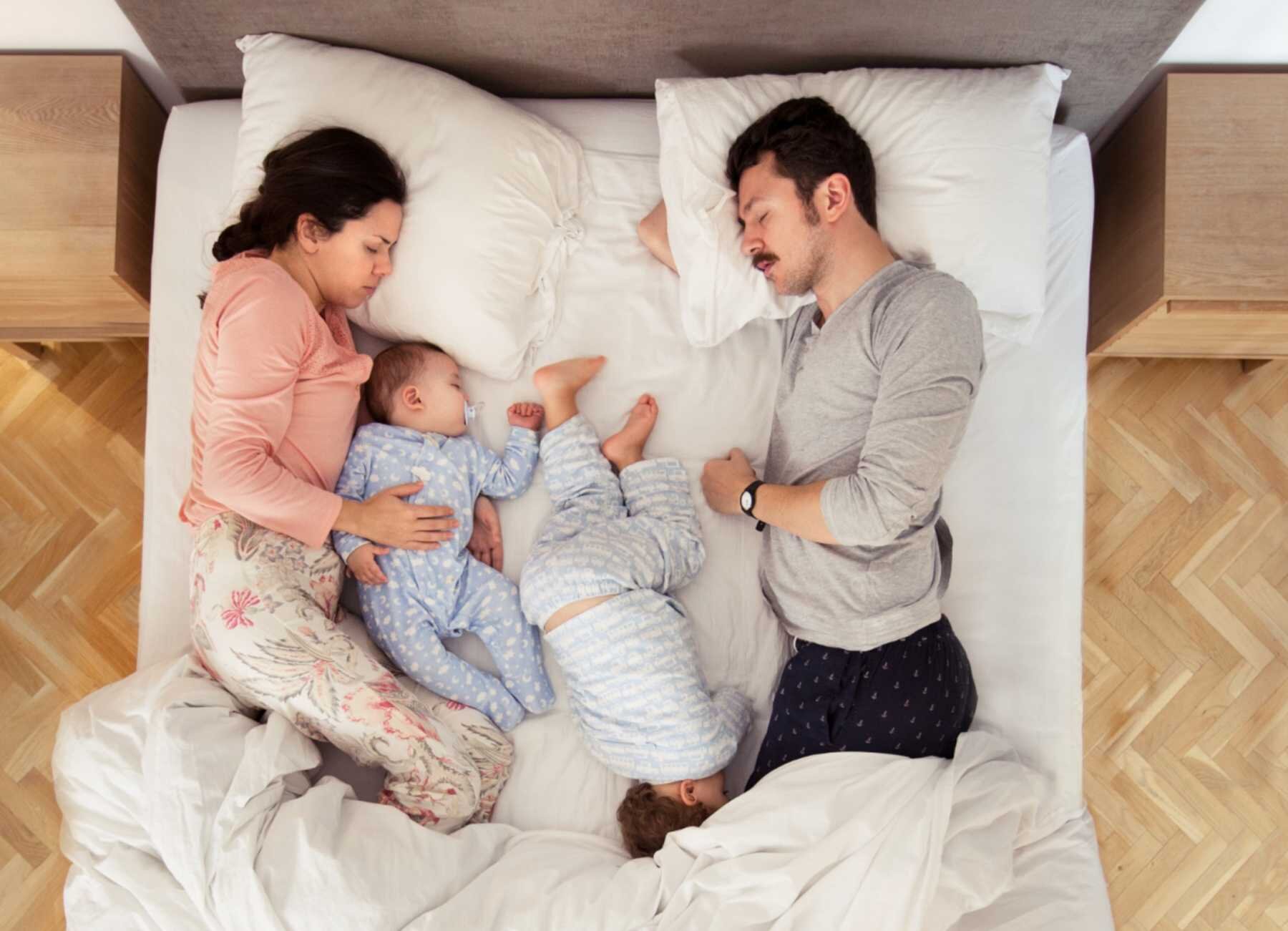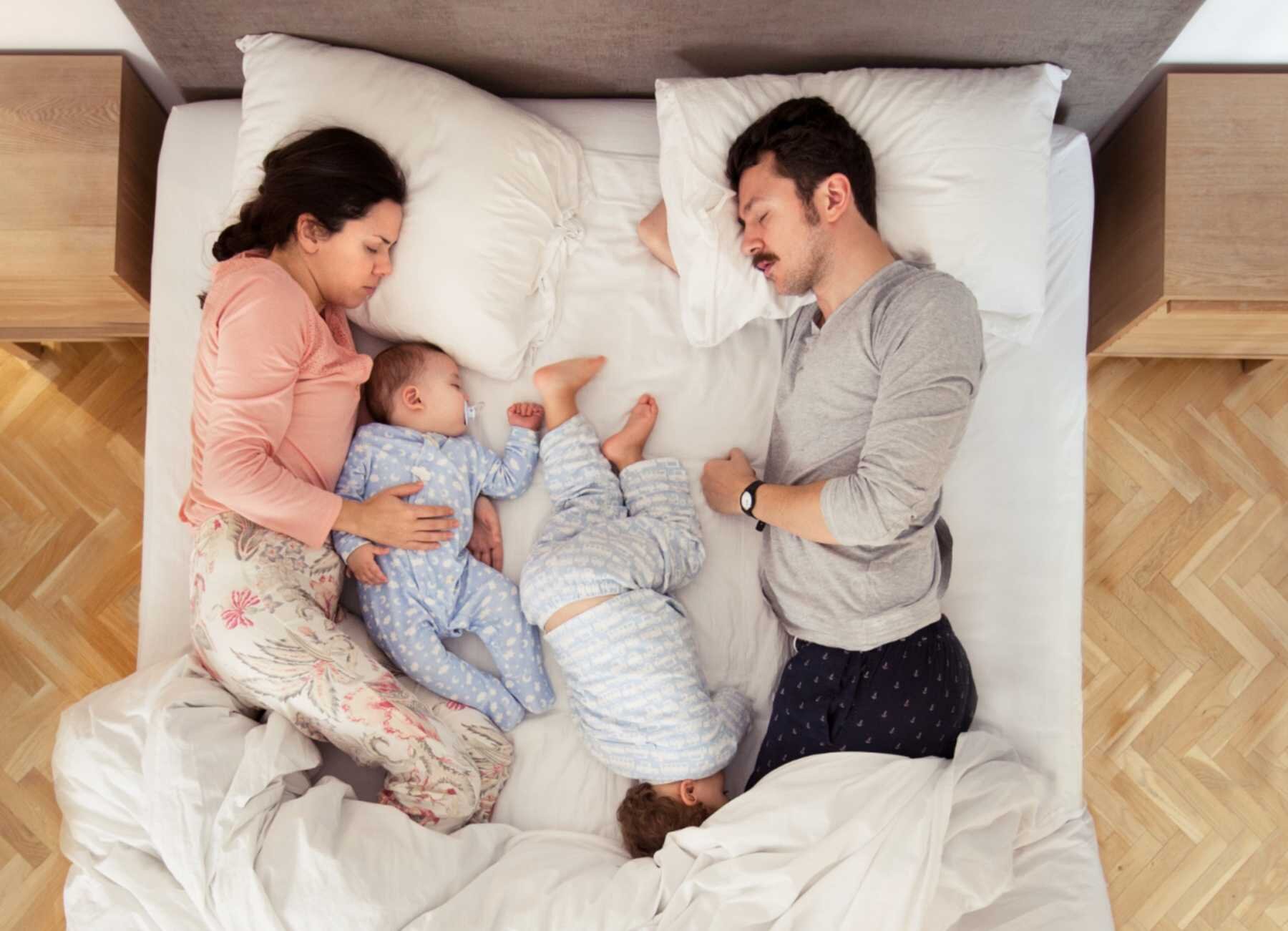When it’s time to go home with your little one bundled in your arms, you want to keep your eye on them 24/7. Additionally, you’ll be wanting to cuddle with them at night, but that might be dangerous to your baby. A common topic among parents and pediatricians is: should parents co-sleep or bed-sharing with their baby.
This isn’t a simple topic. It not only depends on the parents’ preference of their sleeping arrangements, but they need to be extra cautious due to the inherent risks involved. According to the American Academy of Pediatrics (AAP) says that sleeping in the same bed with your child is a risk of suffocation, sudden infant death syndrome (SIDS), and other sleep-related deaths. In the United States, approximately 3,500 infants die from sleep-related infant deaths, according to AAP.
Co-sleeping and bed-sharing are not the same, and the term is sometimes used interchangeably. You can say that bed-sharing is a type of co-sleeping.
Co-sleeping is a practice in which parents sleep in the same room with their infant, close enough for them to touch. What this often looks like placing the crib next to the family bed. While in bed-sharing, the infant sleeps in the same bed as their parents.
Pros of co-sleeping
Co-sleeping may not be widely practiced in the United States, but it’s a cultural norm in other countries. Despite the varying opinions about co-sleeping, those who prefer it say that it promotes bonding, encourages breastfeeding, and improves infant sleep.
Who wouldn’t want to be as close with their little one day and night? Time is so precious that we couldn’t help but being near your baby makes nighttime feeding and getting back to sleep quick and easy. Plus, it’s less of a risk for SIDS when your little one has his/her crib or bassinet close to the family bed.
Cons of co-sleeping
The opposing view on this topic is more towards bed-sharing than co-sleeping. Because in bed-sharing, your baby is more at risk of SIDS, especially during the first six months. Suffocation hazards are present in bed-sharing in soft or loose bedding, pillows, and adult bed mattresses. Also, bed-sharing increases the likelihood of the newborn getting wedged between a mattress or headboard.
Aside from the risk of SIDS, mentioned in Parents.com, Dr. Schneeberg of Connecticut Children’s Medical Center shares that co-sleeping may cause your child to:
(1) Develop a sleep crutch. Your child may become attached to having a parent around when it’s time to sleep, which can develop into a severe nocturnal obstacle. The child should be independent and learn how to fall asleep without the presence of a parent.
(2) Display anxious behaviors. Such behavior can surface when they’d expect interactions like back rubbing, patting, and being held to fall asleep. It may be seen as an anxious behavior because they have difficulty falling asleep without a parent nearby.
(3) Affect sleep quality. The parents’ sleep quality is affected due to growing children being active sleepers. Dr. Schneedberg explains that children often kick or thrash around in their sleep, which can disrupt their parents’ sleep, making the adults restless.
Guide for a safe co-sleeping environment
The AAP released Safe Sleep Environment Recommendations that every new parent must be aware of.
-
Always have the infant sleep in a supine (on their back) position when sleeping until they reach one year of age.
-
Use a firm sleep surface to reduce SIDS risk, as soft bedding remains a risk for infants older than four months.
-
Don’t leave infants asleep on sofas, armchairs, or sitting devices.
-
Room share (co-sleep) without bed-sharing.
-
If a parent falls asleep while feeding the infant in bed, they should place the infant back on a separate sleep surface as soon as they wake up.
-
No pillows, sheets, blankets, or any other items that could obstruct infant breathing or cause overheating should be in bed.
You can read more on AAP’s website about how to provide a safe sleep environment for an infant.
Parents have different beliefs and opinions regarding this topic. If you choose to co-sleep or bed-share, we hope you are better prepared after reading this article.
Wishing you a happy + restful environment for you and your little one!
Sources:
https://www.whattoexpect.com/first-year/cosleeping.aspx
https://www.healthline.com/health/parenting/co-sleeping-with-toddlers#benefits


